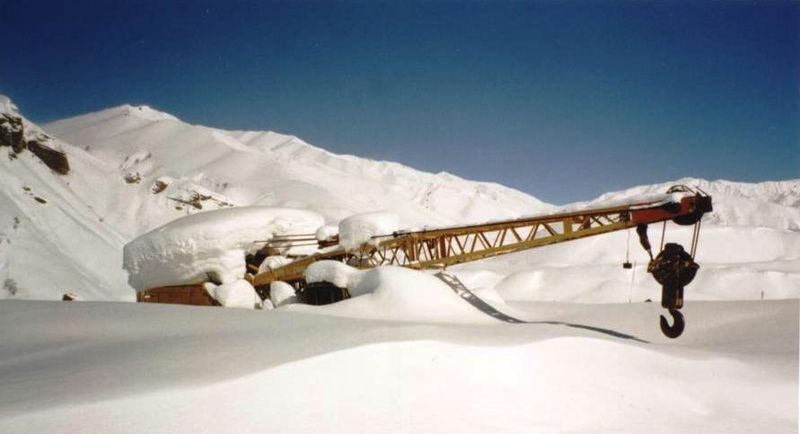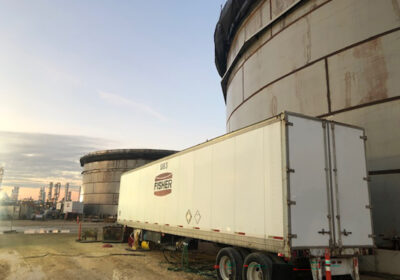TOP TEN TIPS FOR WINTER CRANE SAFETY

Today we welcome Fisher Tank’s own Jeanne Johnson to the Think Tank. Jeanne publishes our internal newsletter for employees & other members of the Fisher Tank family. That newsletter always includes safety tips and valuable safety information that relates to the work we do. We’re excited to begin sharing those tips via the Think Tank!
For Fisher Tank Company, safe crane operation is a vital part of building field erected welded steel storage tanks. On any construction site, cranes require vigilant attention, and winter weather can increase the potential for accidents and delays. The following tips and best practices, from Stephenson Equipment, Inc., can help tank builders and anyone who works with cranes avoid breakdowns, expensive delays, and dangerous crane accidents.
Check Battery and Connections
Corrosion around battery connections causes less voltage to be transmitted, preventing your machine from starting.
Add Fuel Condition
Check the manufacturer’s recommendations for the amount of condition required. Match the fuel conditioner to the type of fuel you’re using (e.g. low sulfur).
Protect Your Machine
If you can’t keep your machine inside when it’s not in use, at least keep a weather-resistant tarp over the engine. With snow comes condensation, which can cause problems for the entire engine.
Manage Productivity
Winter months have less daylight, so manage your time wisely. Ensure you don’t end up working with little or no daylight!
Keep the Jobsite Clean
It is imperative to keep jobsites neat and clean during winter months. Be sure to clean up debris or equipment that will be hidden by fallen snow. Mark any areas of concern with reflective stakes so snow removal crews can easily identify and stay away from those areas.
Use the Best Fuel
Make sure you are using high quality diesel fuel. The fuel conditioner should match the type of fuel you are using (e.g. low sulfur) and should be approved by manufacturer.
Check Starting Devices and Check for Ice
Make sure block heaters and cold weather starting devices are working properly. Check for ice or snow build up in exhaust or intake if applicable. Inspect and clear ice or snow from throttle and brake area.
Warm Up the Machine
Let machines come up to operating temperature before working. Steering response on equipment with hydraulic steering may become very slow at low temperatures, even when the correct oils re used. Once the engine is started, let the machine idle until the engine reaches operating temperature.
Keep a Spare Fuel Filter
Keep an extra fuel filter in the cab, and follow installation instructions in your operator’s manual.
Keep Safety First
Mount and dismount your machine using three points of contact. Remember that when you are working with snow and ice slips and falls are a common cause of injuries. Wear your seatbelt when operating equipment and stay alert.
For more information on crane safety, visit OSHA.gov.
Click here to read more of our blogs




